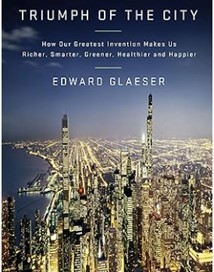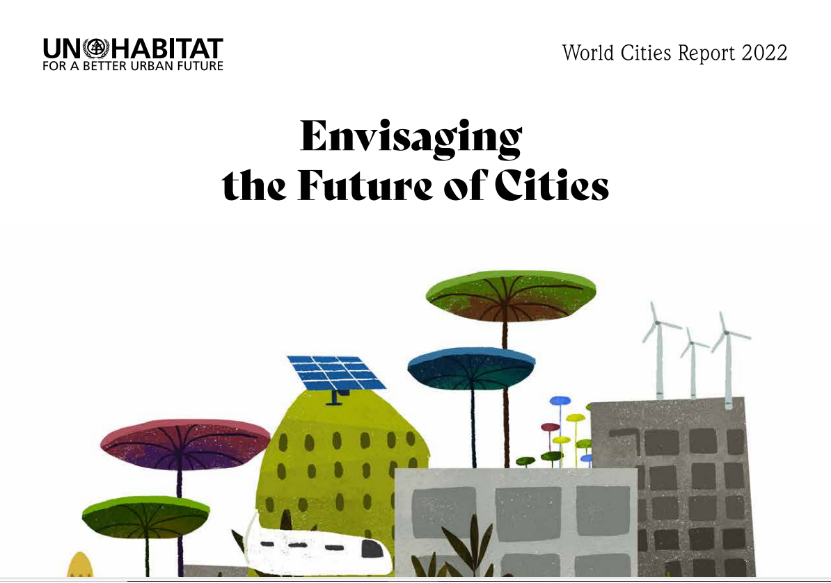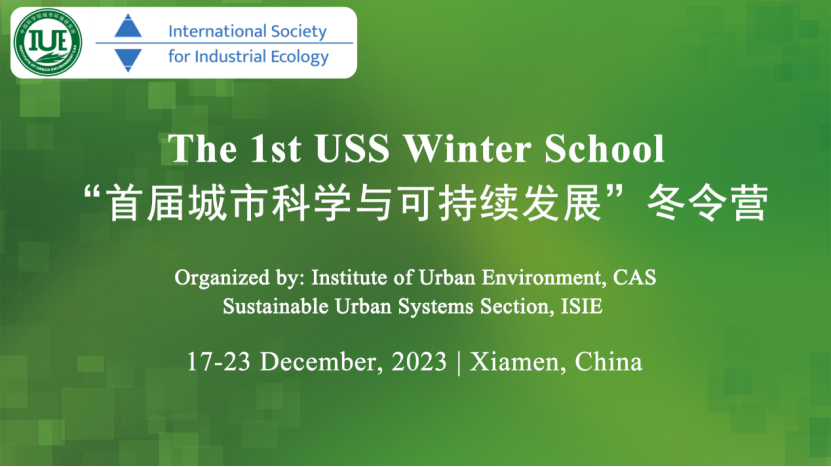Review of Triumph of the City
Guochun Huang
Edward Glaeser is the Fred and Eleanor Glimp Professor of Economics at Harvard. He is widely regarded as one of the most innovative thinkers around and when not teaching has spent his professional life walking around and thinking about cities.
America is an urban nation, yet cities get a bad rap: they're dirty, poor, unhealthy, environmentally unfriendly . . . or are they? In this revelatory book, Edward Glaeser, a leading urban economist, declares that cities are the healthiest, greenest, and richest (in both cultural and economic terms) places to live. He travels through history and around the globe to reveal the hidden workings of cities and how they bring out the best in humankind. Using intrepid reportage, keen analysis, and cogent argument, Glaeser makes an urgent, eloquent case for the city's importance and splendor, offering inspiring proof that the city is humanity's greatest creation and our best hope for the future.
In “Triumph of the City,” Edward Glaeser explores the significant role of cities in economic, social, and cultural development, based on extensive facts and data. He reviews the history of cities from a multidisciplinary perspective, examines their decline, analyzes their current advantages and prospects, and offers suggestions for urban development strategies in developing countries, addressing a series of common urban issues. The book is filled with vivid cases and data, revealing the unique charm of cities as one of humanity’s greatest inventions.
So, what exactly is the triumph of cities?
Economy: Despite the continuous advancement of modern transportation technology, which has somewhat diminished the advantage of cities in terms of resource proximity, the real advantage of cities lies in the exchange of ideas and innovation brought about by their population density. High population density allows information and ideas to spread quickly, greatly enhancing work efficiency. Even in the information age, face-to-face communication remains indispensable. The Jevons Paradox mentioned by the author indicates that technological progress often increases rather than decreases resource usage. Similarly, while information technology facilitates communication, it also increases the demand for face-to-face interactions, making the advantages of cities in this regard irreplaceable.
Social Equity: The prosperity of cities attracts a large number of impoverished people seeking better living and working opportunities. This population movement sometimes gives the illusion that cities are becoming poorer, but in reality, the more cities invest in infrastructure, the more attractive they become to the poor. This does not mean that urban development makes people poorer; on the contrary, cities provide more opportunities and a higher standard of living for the poor, becoming a springboard for them to improve their lives. This is the triumph of cities in promoting social equity.
Environmental Protection: With the development of transportation and the popularity of private cars, cities have shown a trend of suburbanization. The author criticizes the pursuit of single-family homes and private cars by American families, pointing out that this lifestyle actually destroys the natural environment they yearn for. Suburban residents consume more energy in transportation and housing, while cities, through high-density public facilities and developed public transportation systems, effectively reduce energy consumption and carbon emissions. Therefore, the author suggests that developing countries should avoid relying on car-based transportation modes in urban construction to reduce carbon emissions and protect the environment.
If you love nature, move to a skyscraper. If you love the earth, move to the city. Cities are where miracles are born. They are humanity’s greatest invention and brightest hope.
This is Edward Glaeser’s praise for cities in his book. He perfectly connects economics and history, using simple and interesting language, a variety of urban cases, and clear and intuitive data to break people’s prejudices against cities, showing readers the advantages of cities—cities can greatly improve work efficiency, promote the collision of ideas, cultural exchanges, and technological innovation; help us achieve energy savings and environmental protection goals; and improve the overall quality of human life.
The book provides a thorough analysis of the reasons for the rise and fall of cities and offers insightful suggestions for the future development of cities. I believe some of the suggestions in the book are very instructive for the development of Chinese cities. First, cities need to be positioned, and policies need to be formulated according to local conditions. The book mentions that successful cities—such as those in Japan, Milan, and Gaborone—have different natural conditions, industrial advantages, and economic capabilities, so their urban planning also varies. Second, in general, large cities need to develop high-density urbanization to avoid more carbon emissions; of course, the larger the city, the better. The author suggests that Detroit needs to “slim down.” The new urbanization construction key tasks released by China’s National Development and Reform Commission mention the concept of “shrinking small and medium-sized cities,” emphasizing that shrinking cities should change the inertia of incremental planning and guide the concentration of population and public resources in urban areas through slimming and strengthening, mainly targeting cities with population outflow, single industries, and loss of vitality. Finally, “cities are collections of people, not buildings.” This coincides with the concept of new urbanization in China, which is people-centered urbanization construction, accelerating the urbanization of agricultural transfer populations. General Secretary Xi Jinping pointed out that the primary task of promoting urbanization is to promote the orderly realization of urbanization for permanent residents who have the ability to stabilize employment and live in cities. Steadily improving the quality of urbanization allows all residents to fairly share the benefits of urban development.
Of course, some of the views in the book are also debatable. For example, height is the best way to control housing affordability and maintain a high standard of living, encouraging more housing and high-rise buildings in cities. The author uses the example of Mumbai’s horizontal expansion leading to longer commuting distances and high housing prices, compared to Singapore’s high-rise buildings and low housing prices, to illustrate this point. However, I personally believe that from the perspective of demand relations, increasing the number of houses does indeed control housing prices within a certain range. But the high tax burden in the United States, private land ownership, and rampant housing speculation make housing prices high. In China, land is publicly owned, and housing prices are speculatively high. Increasing the number of houses may not necessarily control reasonable housing prices. At the same time, has the author considered the phenomenon of saturation of per capita housing area in the future? Secondly, blindly increasing the housing area without matching municipal, medical, and commercial infrastructure may lead to the phenomenon of “ghost cities” in China. Moreover, Singapore’s low housing prices are mainly because Singapore provides enough affordable government housing to stabilize housing prices. Another example is preferring to help the poor rather than helping poor places. This view is also not applicable to contemporary Chinese society because China has a concept of attachment to the land. Many areas are poor due to natural conditions and historical factors, and a large part of the population in these areas is ethnic minorities. Asking them to leave their homes or not helping these places out of poverty is detrimental to national unity. Also, “living in dense cities is more conducive to environmental protection and energy saving.” This point also makes me ponder whether the author has considered the heat island effect of high-density cities? Will compact cities make people use more energy? Returning to Jane Jacobs’ view, “For whom are cities built?” If people’s lives do not have suitable quality, is it really what we want to emphasize energy saving? Is it beneficial to people’s physical and mental health?
In summary, the development of cities and lifestyles always triggers different views and discussions. Whether we fully agree with Glaeser’s views or not, this book prompts us to look at the evolution of cities from a new perspective. Those who were once skeptical of cities may become more understanding and tolerant; those who love cities will find more reasons to support their enthusiasm. Although prejudice is difficult to eliminate completely, “Triumph of the City” at least makes our understanding of cities more comprehensive and reduces misunderstandings about cities.




